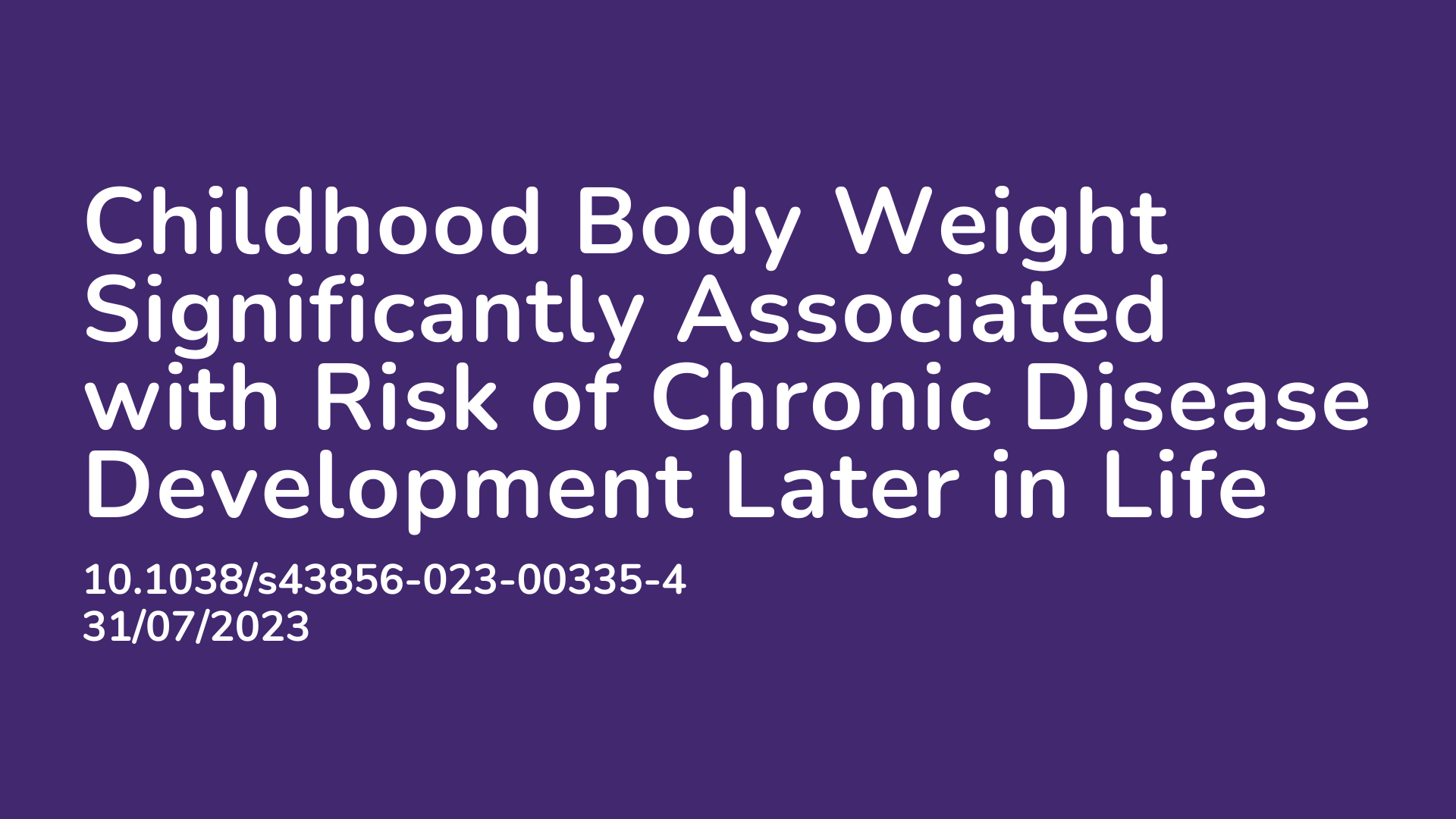Summary:
The World Health Organization has set a global target of reducing low birth weight by 30% by the year 2025, as birth weight is a predictor of overall development and health later in life. Current studies have linked low birth weight with specific health conditions, however little is known about the risk of developing more than one chronic condition later in life. This prospective cohort study which included 246,495 participants found that low birth weight was associated with a higher risk of developing multiple chronic diseases in adulthood. In addition, changes to body weight during childhood that caused either high or low birth weight, no longer in the acceptable weight average, was also associated with an increased risk of developing more than one chronic disease in adulthood. The results of this paper highlight the importance of monitoring body weight early and ensuring that a child’s body weight is within average parameters, as this may prevent the occurrence of multiple chronic diseases later in life.
Abstract:
Background: Little is known about the relationship between early life body size and occurrence of life-course multiple chronic diseases (multimorbidity). We aim to evaluate associations of birth weight, childhood body size, and their changes with the risks of chronic diseases and multimorbidity. Methods: This prospective cohort study included 246,495 UK Biobank participants (aged 40–69 years) who reported birth weight and childhood body size at 10 years old. Birth weight was categorized into low, normal, and high; childhood body size was reported as being thinner, average, or plumper. Multimorbidity was defined as having two or more of 38 chronic conditions retrieved from inpatient hospital data until 31 December, 2020. The Cox regression and quasi-Poisson mixed effects models were used to estimate the associations. Results: We show that 57,071 (23.2%) participants develop multimorbidity. Low birth weight (hazard ratio [HR] 1.29, 95% confidence interval [CI] 1.26–1.33), high birth weight (HR 1.02, 95% CI > 1.00–1.05), thinner (HR 1.21, 95% CI 1.18–1.23) and plumper body size (HR 1.06, 95% CI 1.04–1.09) are associated with higher risks of multimorbidity. A U-shaped relationship between birth weight and multimorbidity is observed. Changing to be thinner or plumper is associated with multimorbidity and many conditions, compared to changing to be average. Conclusions: Low birth weight, being thinner and changing to have a thinner body size in childhood are associated with higher risks of developing multimorbidity and many chronic conditions in adulthood. Early monitoring and maintaining a normal body size in childhood could have life-course benefits for preventing multimorbidity above and beyond individual conditions.
Article Publication Date: 31/07/2023
DOI: 10.1038/s43856-023-00335-4



